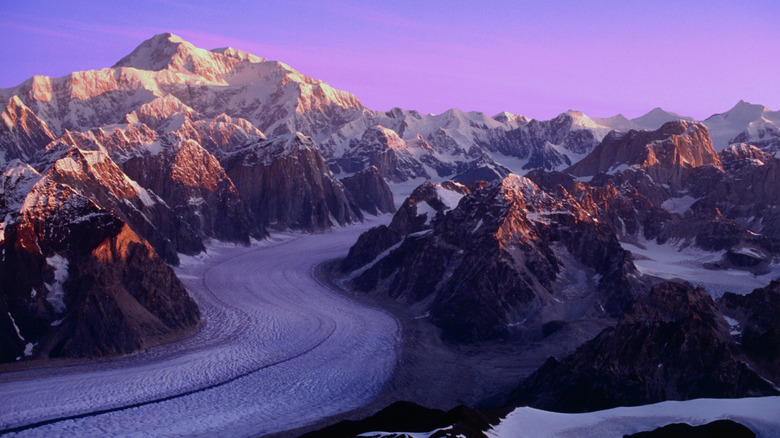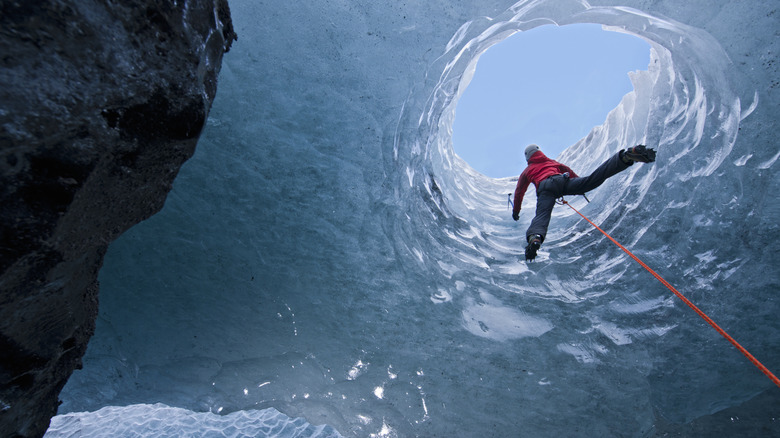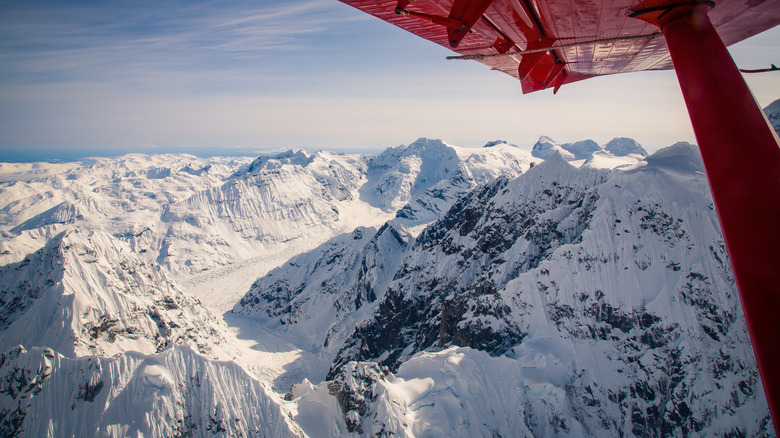Alaska, the “Last Frontier,” is a haven for adventurous souls. From the rugged interior to the wild shores, it is true wilderness that boasts a variety of mountain ranges, many containing truly epic glaciers. One of them, at the foot of Denali-now-Mount-McKinley — although locals and mountain climbers won’t be calling North America’s highest peak by its new official name any time soon — is Ruth Glacier, a climbers’ delight and natural playground.
Scientists and explorers long expected that Ruth Glacier was hiding many secrets in its depths, and that has been confirmed. Carved in the trail of the massive glacier lies the one of the world’s deepest gorges — yes, even deeper than the Grand Canyon —the Great Gorge of Ruth Glacier. Also known as just Ruth Gorge, it is entirely covered by said glacier, which looks like a snowy highway as it weaves for 40 miles (64 km) in the dramatic Denali range, including under the famous mountain itself, which translates to “the Great One” in the local Athabascan language.
Camouflaged by heavy snow cover and the immense glacier, the gorge does not appear to be very deep, despite the mountains soaring high above on either side. Yet renowned explorer Bradford Washburn suspected it had great depth, all the way back to his first flight above the glacier in 1937, as “this glacial mass was somehow squeezing through a granite-walled corridor just one mile wide” (via seattletimes.com). Thousands of years of accumulated snow and ice would have to carve a deep path through such a narrow canyon, Washburn was sure. Finally, thanks to scientific advancements and intrepid explorers, the true depth of Ruth Gorge has been revealed: nearly 1.7-miles deep (or 9,000 ft/2,743 m), with the Ruth Glacier itself measuring at around 3,770-feet (1,200-m) of ice.
Hidden under Ruth Glacier in Denali National Park
If you’re heading to Denali to explore the highest peak in North America at this underrated, mountainous national park, you’ll see Ruth Glacier, which lies three vertical miles below the peak. Named after ethnographer Frederick Cook’s youngest daughter, Ruth Glacier is often crossed en route to the peak of Mount McKinley. Many also visit the 10-mile-long gorge for “the vertical rock and ice walls that line the Ruth Gorge,” which provide “world-class mountaineering and climbing options” (via nps.gov).
It’s hard to imagine the scale of the Great Gorge of Ruth Glacier, and just how deep into the earth the glacier’s path has carved over hundreds of years. Some of the ice in Ruth Gorge is over a thousand years old, and it’s impossible to imagine it ever disappearing. With our rapidly warming climate, worldwide glacial melt is, unfortunately, something scientists have considered. If Ruth Glacier ever does melt away, human eyes may finally see Ruth Gorge in full. It’s hard to imagine this as a good thing, however, as it’ll be a harsh reality: A planet so warm, we’re faced with the disappearance of our precious glaciers.




